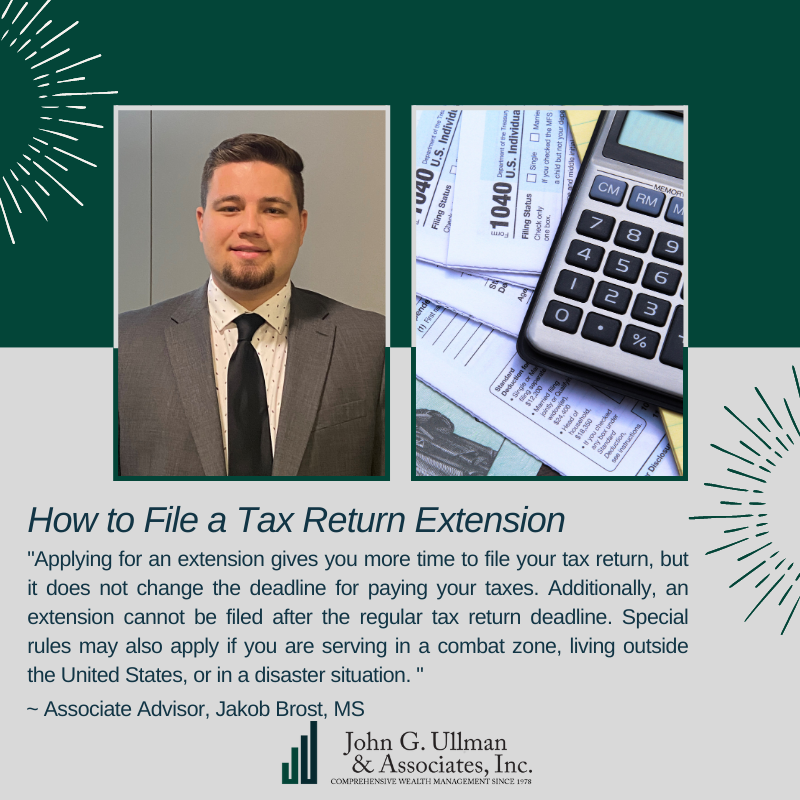Even though tax season comes around year after year, filing taxes can still be a daunting task for many taxpayers. If you need more time to file your tax return, you can apply for a tax extension. However, there are some important things to keep in mind when applying for an extension. In this article, we will guide you through these considerations and provide step-by-step instructions for filing an extension for your tax return.
Before we dive into the specifics of how to file, here are a few important points to keep in mind. Applying for an extension gives you more time to file your tax return, but it does not change the deadline for paying your taxes. Additionally, an extension cannot be filed after the regular tax return deadline. Special rules may also apply if you are serving in a combat zone, living outside the United States, or in a disaster situation. In these cases, it’s recommended to consult with a financial advisor or tax preparer.
To apply for an extension on your tax return, follow these steps:
-
Determine if you need to file an extension:
- This extension will give you an additional six months to file your taxes, changing your filing deadline to October 15th. The exact deadline varies from year to year, as it depends on the day of the week the 15th falls on and whether it is a weekend or a holiday
- Note that extending the deadline to file does not extend the deadline to pay your estimated taxes
- This extension will give you an additional six months to file your taxes, changing your filing deadline to October 15th. The exact deadline varies from year to year, as it depends on the day of the week the 15th falls on and whether it is a weekend or a holiday
-
Gather the necessary information:
- To file for an extension, you’ll need to provide your basic information, like your address and social security number
- You’ll also need to estimate your total tax liability for 2022 and find your total tax payments
- You can find your total tax payments on your W-2 or any 1099-Rs where you elected to withhold a certain percentage
- You can also add any estimated tax payments you have made throughout the year
- To estimate your tax liability, you can use Form 1040-ES or complete your return with the figures you have and estimate the ones you don’t
- You can find your total tax payments on your W-2 or any 1099-Rs where you elected to withhold a certain percentage
-
Choose one of the following methods to file for an extension:
- Individual tax filers can use the IRS Free File to electronically request an automatic extension. This can be done in two ways:
- Guided Tax Preparation (if your adjusted gross income is $73,000 or less)
- Free File Fillable Forms (if your adjusted gross income is greater than $73,000)
- You can also file a paper copy and mail it in
- The specific form for individual filers is Form 4868: Application for Automatic Extension of Time To File U.S. Individual Income Tax Return
- If you owe taxes and make a full or partial payment online, you can get an automatic extension without filing Form 4868
- All you need to do is to indicate that the payment is for an extension, and pay using a debit/credit card, Direct Pay, or the Electronic Federal Tax Payment System (EFTPS)
- Individual tax filers can use the IRS Free File to electronically request an automatic extension. This can be done in two ways:
-
After filing your return with the extension:
- Once you file your return, you will either receive a refund or owe more tax, just like a normal tax return
- If you owe more tax after the original deadline, the remaining balance will be subject to interest and penalty charges
By following the steps outlined in this article, you can successfully apply for an extension on your tax return and avoid potential penalties for late filing. Remember that while an extension provides extra time to file your taxes, it does not extend the deadline for paying your estimated taxes. If you have any questions throughout the process, our experienced advisors and tax professionals at JGUA are more than happy to help.


